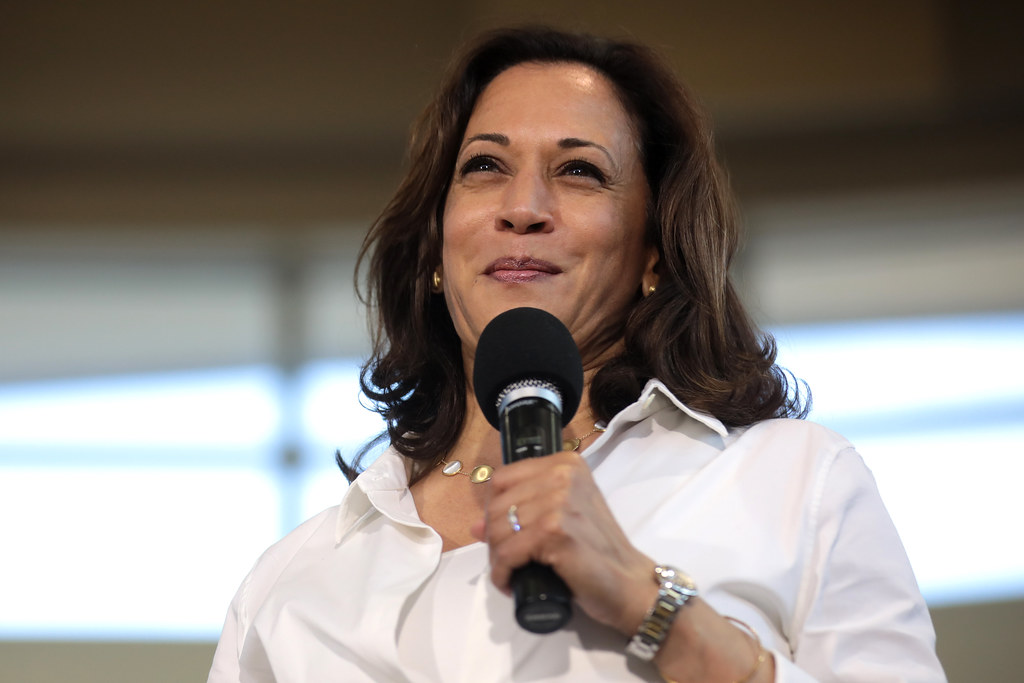
As the 2024 United States presidential election approaches, Vice President Kamala Harris has gained significant momentum in four out of six key swing states on the prediction platform Polymarket. Harris is now leading her Republican opponent, former President Donald Trump, in Wisconsin, Pennsylvania, Michigan, and Nevada—states that are pivotal to securing a win in the upcoming election.
Harris vs. Trump
Harris holds her largest lead in Michigan, where she has a commanding 66% likelihood of victory, followed by a 58% chance in Wisconsin. In Pennsylvania and Nevada, her lead is much slimmer, with Harris holding a 52% edge in Pennsylvania and a 51% chance in Nevada, suggesting these races are far from settled. The margins in these states will likely determine the outcome of the election, making them critical battlegrounds for both candidates.
On the prediction platform Polymarket, Harris’s overall odds of winning the presidency have risen to 52%, a 5% advantage over Trump, who currently stands at 47%. This is a notable shift, as Trump initially dominated the platform’s betting odds early in the campaign.
Trump’s odds on Polymarket took a hit during his first debate with Harris, where some viewers perceived his performance as lackluster. His chances of winning dropped by 3% during the debate, but he managed to recover shortly afterward, bringing the race back to a near tie. This fluctuation highlights how critical public appearances and debates are in shaping voter sentiment and prediction markets.
Despite his initial recovery, Trump’s campaign has faced challenges beyond the debate stage. One key issue that may have affected his standing with certain voters is the announcement of a token launch for his family’s decentralized finance project, World Liberty Financial. While some crypto enthusiasts viewed the launch favorably, others were skeptical, with some labeling it a “grift” aimed at capitalizing on the crypto trend.
Harris Campaign’s Policy Platform and Crypto’s Role
In early September 2024, Harris’s campaign released a comprehensive policy platform outlining various initiatives aimed at increasing government spending and addressing issues like student loan debt, social security, and housing affordability. Notably, the policy platform made no mention of cryptocurrencies, a subject that has been a focal point for certain voter segments, particularly in the tech and finance sectors.
Harris’s proposals include significant financial reforms such as student loan debt relief and a $25,000 down payment assistance program for first-time homebuyers. These initiatives have appealed to a broad base of voters, but they have also drawn criticism from fiscal conservatives and those within the cryptocurrency community who fear that her policies may lead to increased regulation of digital assets.
Crypto Community’s Engagement in the Election
Investors, speculators, and executives in the cryptocurrency industry have been closely following the 2024 election, given its potential impact on the market. Many within the crypto space have thrown their support behind candidates they perceive as more favorable to decentralized finance and blockchain technology. Through public pressure campaigns, community outreach, and political donations, the crypto community is actively trying to influence the election outcome in favor of a pro-crypto administration.
Market sentiment suggests that a second Trump presidency would be bullish for cryptocurrency prices, particularly for Bitcoin and other major tokens. Trump’s laissez-faire approach to regulation and his engagement with decentralized finance projects make him an appealing candidate for crypto investors. In contrast, Harris is perceived as potentially more regulation-friendly, which could lead to stricter oversight of the crypto market, a prospect that has left some investors wary.
Despite these differing views, some analysts believe that the outcome of the election may not have as much of an impact on cryptocurrency markets as initially feared. Geoff Kendrick, global head of digital assets research at Standard Chartered, recently predicted that Bitcoin could reach $200,000 by the end of 2025, regardless of who wins the election. According to Kendrick, broader macroeconomic trends and increased institutional adoption of digital currencies are likely to drive Bitcoin’s price higher, irrespective of political shifts.
A Tight Race
As the 2024 election draws nearer, both Harris and Trump are focusing their efforts on swing states, which will ultimately decide the next President of the United States. With Harris leading in four of the six swing states tracked by Polymarket, her campaign is gaining momentum. However, with razor-thin margins in Pennsylvania and Nevada, the race remains too close to call, and both candidates will need to fight for every vote in these critical states.
Trump’s ability to regain lost ground in key swing states and his appeal to voters in the crypto community could still turn the tide in his favor. On the other hand, Harris’s focus on broad policy initiatives and her growing lead in key states may help solidify her path to the presidency.
The 2024 U.S. presidential election is shaping up to be one of the most closely contested races in recent history, with Kamala Harris currently holding a slight edge over Donald Trump in the crucial swing states. As both candidates continue to engage voters and refine their strategies, the outcome remains uncertain. The crypto community’s role in this election highlights the increasing importance of digital assets in modern political discourse. While market sentiment may favor one candidate over the other, broader economic trends may ultimately dictate the trajectory of both the crypto market and the U.S. economy.
Featured image credit: Gage Skidmore via Flickr
Follow us for more breaking news on DMR
